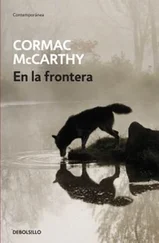Serge has started moving round to the sheet’s side so he can find out what the source of this strange shadow display is when a scream comes from some way behind him. He turns round. A second scream follows the first: the voice is Maureen’s, and it’s coming from the house. He runs back across the lawn towards it. The door’s open; in the hall, Maureen’s crouching down in front of Spitalfield, who’s lying immobile on the floorboards. Spitalfield is stiff: his legs are sticking straight out at an odd angle to the ground; his mouth is frozen in a gaping rictus; foam sits hard-set on its lips.
“The little bitch!” shrieks Maureen. “Where’s your sister?”
“I don’t know,” replies Serge. “Is he dead?”
He’s dead alright. Sophie, when she eventually emerges, denies having fed the poison to him deliberately.
“He must have sneaked into my lab,” she whines. “It’s not my fault.”
Maureen thinks otherwise. She tries to get her employer to punish his daughter, but Carrefax takes Sophie’s word on this one.
“We’re British, not Napoleonic. Innocent till proven guilty.”
Sophie assuages whatever guilt she might feel by deciding to accord Spitalfield proper funeral rites. To Maureen’s further horror she persuades her father to allow her to stuff the cat. This takes her two days of uninterrupted labour: Serge, perched on a chair in her lab’s corner, watches her empty out his stomach of its organs, guts and juices, then peel the skin back from the skull towards the spine and ribs. The innards, gathered in a bucket, exude a rancid, sour smell; Serge moves closer to Sophie to block it out by breathing in the odour of her hair.
“Now you’re distracting me,” she says. “Clear off.”
She calls him back, though, some hours later, to show him a trick of which she seems extremely proud. Sticking two electric wires into the cat’s left hind leg, she throws a switch on to complete the circuit-and the leg, galvanised by the current, twitches and then flexes, as though Spitalfield were trying to walk. She switches the current off, and the leg reverts to its rigid, straight position. She throws the switch again; again the leg twitches and flexes. As she animates the leg over and over again, she shakes with a laughter that’s sparked up afresh with each new quickening-as though she were also animated by the current, which was somehow running through her body too. Serge, watching the leg move with the angular stiffness of a clockwork mechanism, thinks of semaphore machines, their angles and positions, then of the strange, moving shapes he saw played out across the sheet. After a while, he starts to wonder if perhaps the morbid and hypnotic sequences being executed by the dead cat’s limb contain some kind of information-“contain” in the sense of enclosing, locking in, repeating in a code for which no key’s available, at least not to him…
On the third day after Spitalfield’s demise, Sophie emerges with the reconstituted cat mounted on a board and, gathering a small crowd in the Crypt Park, has them squeeze into the Crypt itself, whose door her father opens with a large, rusty key. Here, among cobwebs undisturbed for who knows how long and dust-residues whose origins must lie in the last century if not the one before that, she installs her trophy on top of a tomb whose upper surface is so strewn with dead insects that she has to clear a swathe for it with her sleeve.
“He’s the wrong shape,” says Serge.
He’s right: Spitalfield’s surface has gone corrugated, with stiff ripples running down his fur; his neck juts out aggressively, like a tiger’s or leopard’s; his face is dented and irregular, with unmatching marble eyes.
“Gives him more character,” their father says. “Good job! Any words?”
There’s a pause while they all wait for her to say something: Serge, their father, Bodner, Miss Hubbard and Mr. Clair. Widsun’s not with them anymore: he left the day after the Pageant. After a few seconds Sophie brushes her hands and replies:
“No. Let’s go.”
But after they’ve stepped out and locked the door behind them she seems to change her mind. She stops, turns to her father and, pointing to the Crypt, smiles as she asks:
“You know what this is now?”
“No,” he answers. “What?”
“A catacomb.”
“A cat a-what? ‘Catacomb’? Ah, yes,” says Carrefax, “a catacomb: that’s good. Very good.”
The static’s like the sound of thinking. Not of any single person thinking, nor even a group thinking, collectively. It’s bigger than that, wider-and more direct. It’s like the sound of thought itself, its hum and rush. Each night, when Serge drops in on it, it recoils with a wail, then rolls back in crackling waves that carry him away, all rudderless, until his finger, nudging at the dial, can get some traction on it all, some sort of leeway. The first stretches are angry, plaintive, sad-and always mute. It’s not until, hunched over the potentiometer among fraying cords and soldered wires, his controlled breathing an extension of the frequency of air he’s riding on, he gets the first quiet clicks that words start forming: first he jots down the signals as straight graphite lines, long ones and short ones, then, below these, he begins to transcribe curling letters, dim and grainy in the arc light of his desktop…
He’s got two masts set up. There’s a twenty-two-foot pine one topped with fifteen more feet of bamboo, all bolted to an oak-stump base half-buried in the Mosaic Garden. Tent pegs circle the stump round; steel guy wires, double-insulated, climb from these to tether the mast down. On the chimney of the main house, a pole three feet long reaches the same height as the bamboo. Between the masts are strung four eighteen-gage manganese copper wires threaded through oak-lath crosses. In Serge’s bedroom, there’s a boxed tuning coil containing twenty feet of silk-covered platinoid, shellacked and scraped. Two dials are mounted on the box’s lid: a large, clock-handed one dead in the centre and, to its right, a smaller disc made from ash-wood recessed at the back and dotted at the front by twenty little screws with turned-down heads set in a circle to form switch-studs. The detector’s brass with an adjusting knob of ebonite; the condenser’s Murdock; the crystal, Chilean gelina quartz, a Mighty Atom mail-ordered from Gamage of Holborn. For the telephone, he tried a normal household one but found it wasn’t any use unless he replaced the diaphragms, and moved on to a watch-receiver-pattern headset wound to a resistance of eight and a half thousand ohms. The transmitter itself is made of standard brass, a four-inch tapper arm keeping Serge’s finger a safe distance from the spark gap. The spark gap flashes blue each time he taps; it makes a spitting noise, so loud he’s had to build a silence box around the desk to isolate his little RX station from the sleeping household-or, as it becomes more obvious to him with every session, to maintain the little household’s fantasy of isolation from the vast sea of transmission roaring all around it.
Tonight, as on most nights, he starts out local, sweeping from two hundred and fifty to four hundred metres. It’s the usual traffic: CQ signals from experimental wireless stations in Masedown and Eliry, tapping out their call signs and then slipping into Q-code once another bug’s responded. They exchange signal quality reports, compare equipment, enquire about variations in the weather and degrees of atmospheric interference. The sequence QTC, which Serge, like any other Wireless World subscriber, knows means “Have you anything to transmit?”, is usually met with a short, negative burst before both questioner and responder move on to fish for other signals. Serge used to answer all CQs, noting each station’s details in his call-book; lately, though, he’s become more selective in the signals he’ll acknowledge, preferring to let the small-fry click away as background chatter, only picking up the pencil to transcribe the dots and dashes when their basic QRNs and QRAs unfold into longer sequences. This is happening right now: an RXer in Lydium who calls himself “Wireworm” is tapping out his thoughts about the Postmaster General’s plans to charge one guinea per station for all amateurs.
Читать дальше












